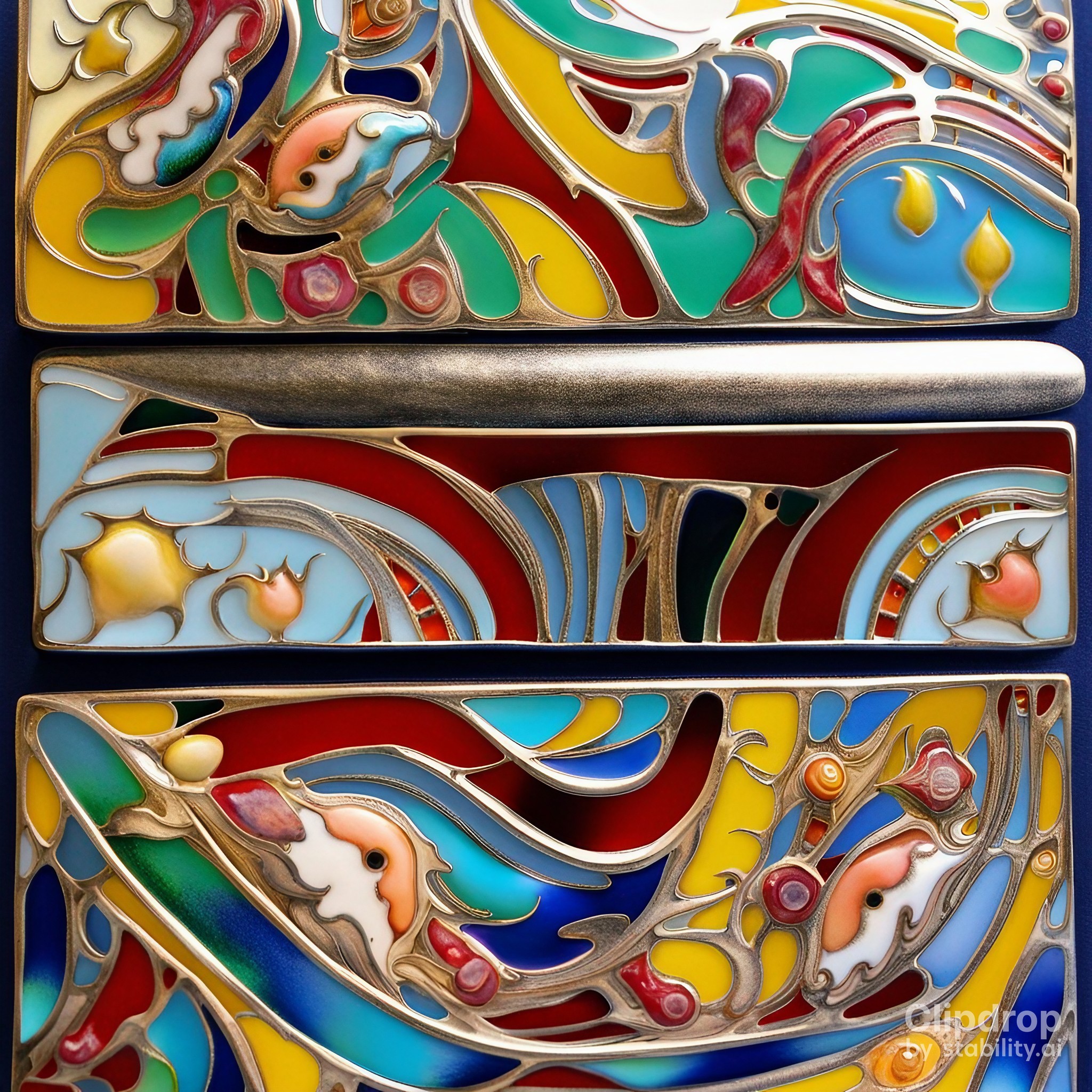exploring the beauty of enamel work: techniques, materials, and inspiration
Enamel work is a fascinating form of art that has been practiced for centuries. It involves the creation of stunning designs on various surfaces using a technique known as enameling. In this article, we will explore the art of enameling, the different techniques involved, the materials used, and where artists can find inspiration for their work.
The art of enameling
What is enamel?
Enamel is a type of glass that is finely ground into a powder form. It is mixed with various pigments to create vibrant colors. This mixture is then applied to a metal surface and fired in a kiln at high temperatures. The heat causes the enamel powder to melt and fuse with the metal, creating a smooth and durable surface.
Who is Barbara McFadyen?
Barbara McFadyen is a renowned enamelist who has dedicated her life to perfecting the art of enameling. She is known for her innovative techniques and exquisite designs. Her work has been exhibited in galleries all over the world and has earned her numerous awards.
How to get started with enamel art?
If you’re interested in getting started with enamel art, there are a few essential materials you’ll need. These include vitreous enamel powders in various colors, a kiln for firing the enamel, a torch for torch firing enamel, saws and solder for creating metal shapes, and enameling tools such as stencils and stamps. You can learn the basics of enameling through workshops and classes offered by experienced artists or by attending programs at renowned art institutions like Penland.
Enamel techniques
What are the different types of enameling?
There are several different types of enameling techniques that artists can explore. One of the most popular techniques is cloisonné, where metal wires are used to create compartments on the surface, which are then filled with enamel. Another technique is plique-à-jour, which involves creating a stained glass-like effect by filling transparent enamel in a metal frame. Torch-fired enamel is another technique where a torch is used to heat the enamel instead of a kiln, allowing for more experimental techniques and unique results.
How does vitreous enamel work?
Vitreous enamel works by applying layers of enamel powder onto a metal surface. These layers are then fired in a kiln at high temperatures, causing the enamel to melt and fuse with the metal. This process creates a smooth, glossy, and durable finish. Vitreous enamel is known for its vibrant colors and beautiful shine, making it a popular choice among enamelists.
What is the role of a kiln in enamel work?
A kiln plays a crucial role in enamel work as it is used to fire the enamel at high temperatures. The heat from the kiln causes the enamel powder to melt and fuse with the metal surface, creating a permanent bond. Kilns are available in various sizes and types, allowing artists to choose the one that best suits their needs.
Exploring enamel in 2023
What are the latest trends in enamel art?
Enamel art is constantly evolving, and in 2023, there are several exciting trends that enamelists are exploring. One of the trends is the use of liquid enamels, which allow for more painting and drawing techniques on enameled surfaces. Another trend is the use of opaque enamel powders to create dimensional effects and textures. Artists are also experimenting with underglaze techniques, where enamel is applied to the surface before firing, resulting in unique color combinations.
Who is Linda Darty and her contribution to enameling?
Linda Darty is a highly respected enamelist who has made significant contributions to the field of enameling. She is known for her innovative techniques and experiments with enamel. Her work explores the boundaries of enamel art and pushes the limits of traditional techniques. Linda Darty’s teachings and writings have inspired many enamelists around the world.
How does enamel work in contemporary art?
Enamel work has found its place in contemporary art. Many artists are incorporating enamel into their mixed media pieces, combining it with other materials such as wood, paper, and metal. Enamel allows artists to add vibrant colors, textures, and depth to their creations. It adds a unique touch to fine art and makes a statement in the world of contemporary art.
Inspiration for enamel artists
Where can enamelist find inspiration for their work?
Enamelists can find inspiration for their work in a variety of places. Nature is a popular source of inspiration, with its vibrant colors, intricate details, and organic forms. Artists can also find inspiration in everyday objects, architecture, and cultural elements. Visiting museums and art exhibitions, exploring different cultures, and experimenting with different techniques can also spark creativity and help enamelists find new sources of inspiration.
How to add texture to enamel pieces?
Texture can add depth and visual interest to enamel pieces. There are several techniques enamelists can use to achieve texture. One technique is sgraffito, where a tool is used to scratch or etch patterns into the enamel surface. Another technique is adding enamel powders of different consistencies to create raised or textured areas. Enamelists can also experiment with different tools such as hammers or stamps to create unique textures.
What techniques can be used to layer enamel?
Layering enamel can create beautiful effects and depth in enameled pieces. Enamelists can layer transparent enamel over opaque enamel to create a sense of depth and dimension. They can also experiment with different colors and opacities to create unique color combinations and visual effects. Using stencils or decals can also allow for precise layering and intricate designs.
